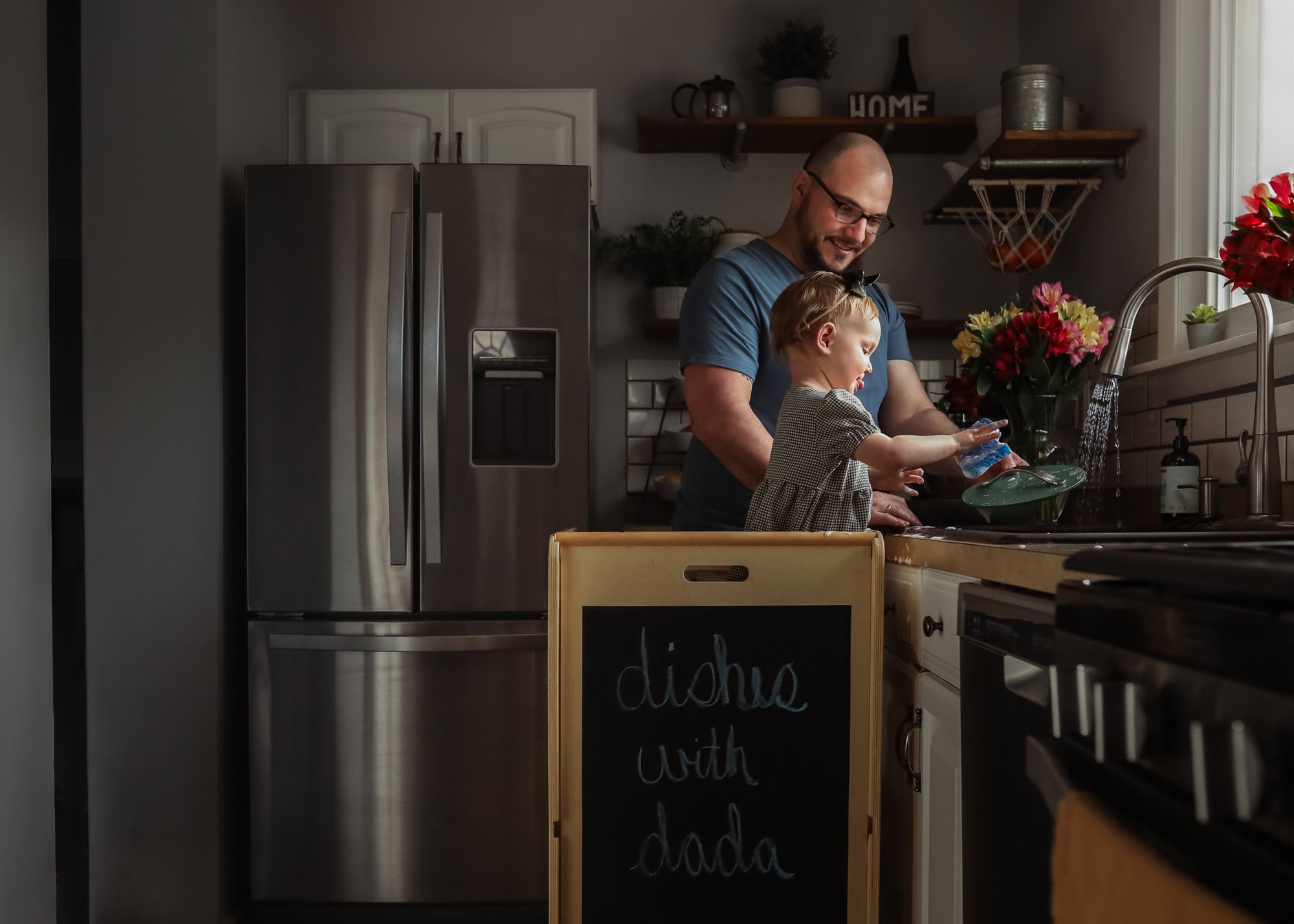A learning tower is a must-have for a Montessori toddler. But not all learning towers are the same. Before you buy yours, make sure you know what to look for!
Learning Tower Benefits
Not sure how it works? A learning tower is like a step stool, but it has sides and an adjustable platform. It allows a child to independently climb up and be safely at counter height. Kids love to be part of the action!
It’s commonly used for kids 18 months to 6 years old, but younger toddlers who are climbing and standing also love them. And an older child on the short side will appreciate the boost.
The tower gives kids a chance to help with food preparation or even to just play nearby while you do your own task. It’s helpful for giving your child the chance to do some more things for themselves, like wash their hands in the sink or help you slice food for dinner.
The possibilities are nearly endless!
Safety
Of course, safety comes first! Make sure your learning tower is constructed from high quality materials that can withstand a lot of use.
You also want to make sure that the tower has sides: it’s much safer to have the sides enclosed to prevent falling (of course, you’ll still need to supervise). That will also allow a younger child to use the tower before they might be able to safely stand on an open platform.
Multipurpose use
A learning tower doesn’t need to stay in the kitchen...you can use it in any room in the house that your child needs to reach a higher level!
On top of that, learning towers with additional options mean that your child will get even more use out of it. Many have a surface for writing, or can be shifted and used in another way. You can minimize the amount of large items in your home if you use a learning tower that services more than one purpose for you.
Our Cassarokids climbing tower is not just a simple kitchen tower.
Chalkboard. Our learning tower has an attached chalkboard that is vertical, which is great for your child’s physical development and hand-eye coordination. They can draw or practice their letter formation. Using chalk (instead of, say, a marker) also provides some added resistance for the hand, which increases fine motor skills.
Slide. Flip that chalkboard over and it becomes a slide! No need for a separate toddler slide taking up space. The best part?
The slide can connect to any Pikler triangle to become a bridge. You can increase the creative gross motor play options for your child. Walking on the bridge helps develop balance and coordination. Plus it’s a safe, parent-approved way to learn to take risks.
Check out our learning towers and more in the shop!
